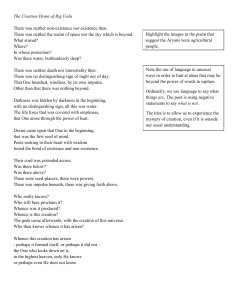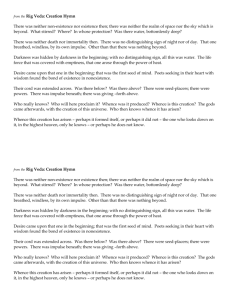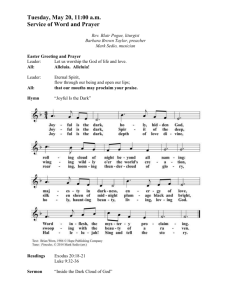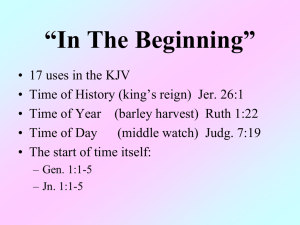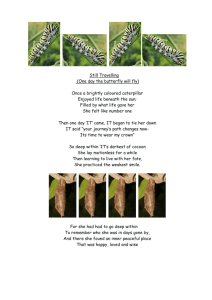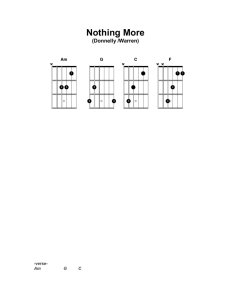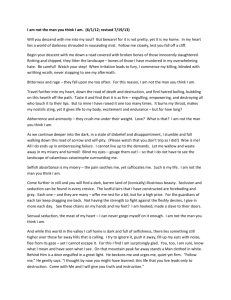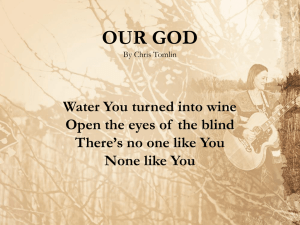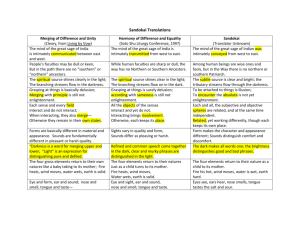Rig Veda - Creation Hymn
advertisement
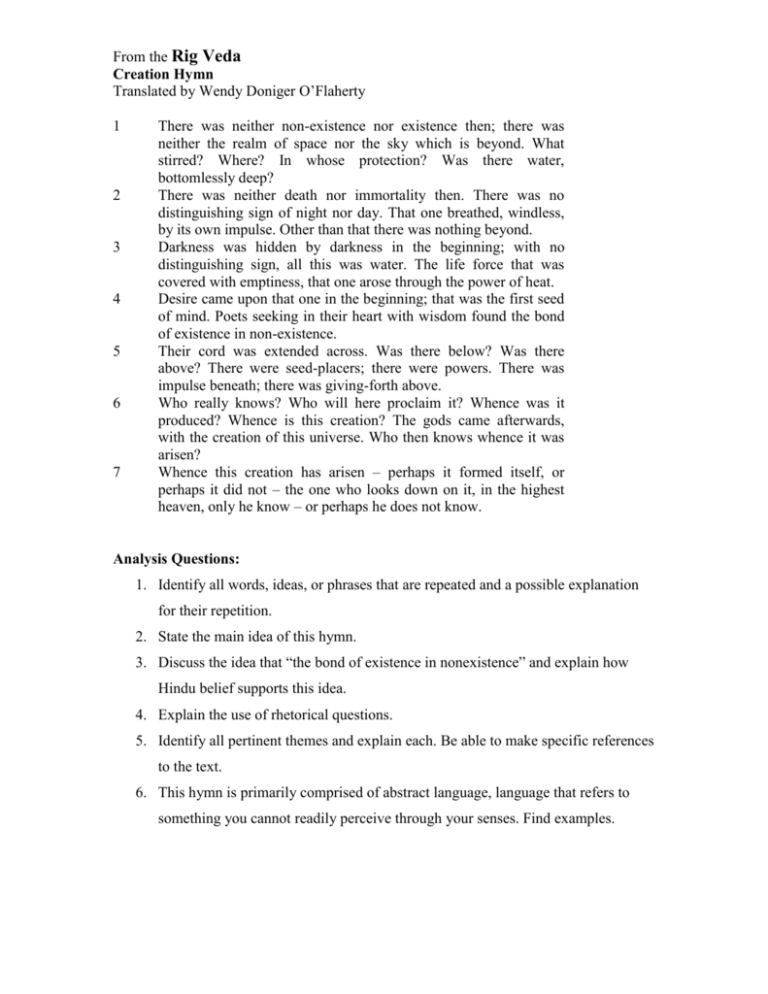
From the Rig Veda Creation Hymn Translated by Wendy Doniger O’Flaherty 1 2 3 4 5 6 7 There was neither non-existence nor existence then; there was neither the realm of space nor the sky which is beyond. What stirred? Where? In whose protection? Was there water, bottomlessly deep? There was neither death nor immortality then. There was no distinguishing sign of night nor day. That one breathed, windless, by its own impulse. Other than that there was nothing beyond. Darkness was hidden by darkness in the beginning; with no distinguishing sign, all this was water. The life force that was covered with emptiness, that one arose through the power of heat. Desire came upon that one in the beginning; that was the first seed of mind. Poets seeking in their heart with wisdom found the bond of existence in non-existence. Their cord was extended across. Was there below? Was there above? There were seed-placers; there were powers. There was impulse beneath; there was giving-forth above. Who really knows? Who will here proclaim it? Whence was it produced? Whence is this creation? The gods came afterwards, with the creation of this universe. Who then knows whence it was arisen? Whence this creation has arisen – perhaps it formed itself, or perhaps it did not – the one who looks down on it, in the highest heaven, only he know – or perhaps he does not know. Analysis Questions: 1. Identify all words, ideas, or phrases that are repeated and a possible explanation for their repetition. 2. State the main idea of this hymn. 3. Discuss the idea that “the bond of existence in nonexistence” and explain how Hindu belief supports this idea. 4. Explain the use of rhetorical questions. 5. Identify all pertinent themes and explain each. Be able to make specific references to the text. 6. This hymn is primarily comprised of abstract language, language that refers to something you cannot readily perceive through your senses. Find examples. Night 1 2 3 4 5 6 7 8 The goddess Night was drawn near, looking about many sides with her eyes. She has put on all her glories. The immortal goddess has filled the wide space, the depths and the heights. She stems the tide of darkness with her light. The goddess has drawn near, pushing aside her sister the twilight. Darkness, too, will give way. As you came near to us today, we turned homeward to rest, as birds go to their home in a tree. People who live in villages have gone home to rest, and animals with fee, and animals with wings, even the ever-searching hawks. Ward off the she-wolf and the wolf; ward off the thief. O night full of waves, be easy for us to cross over. Darkness – palpable, black, and painted – has come upon me. O Dawn, banish it like a debt. I have driven this hymn to you as the herdsman drives cows. Choose and accept it, O Night, daughter of the sky, like a song of praise to a conquerer. (Prentice Hall Literature: World Masters) Analysis Questions: 1. The poem is broken down by section, each section serving a different purpose. Describe the purpose of each section. 2. In the first two verses, the poet tells us that the goddess Night “has put on all her glories” and “stems the tide of darkness with her light.” To what do you think the poet is referring? 3. Identify the author’s purpose of the poem. 4. Why does the author use such strong examples of personification? Explain what and how it is being personified. 5. List examples of similes. 6. State the main idea of the poem. 7. Identify all pertinent themes and explain each. Be able to make specific references to the text.
